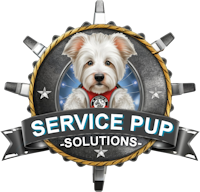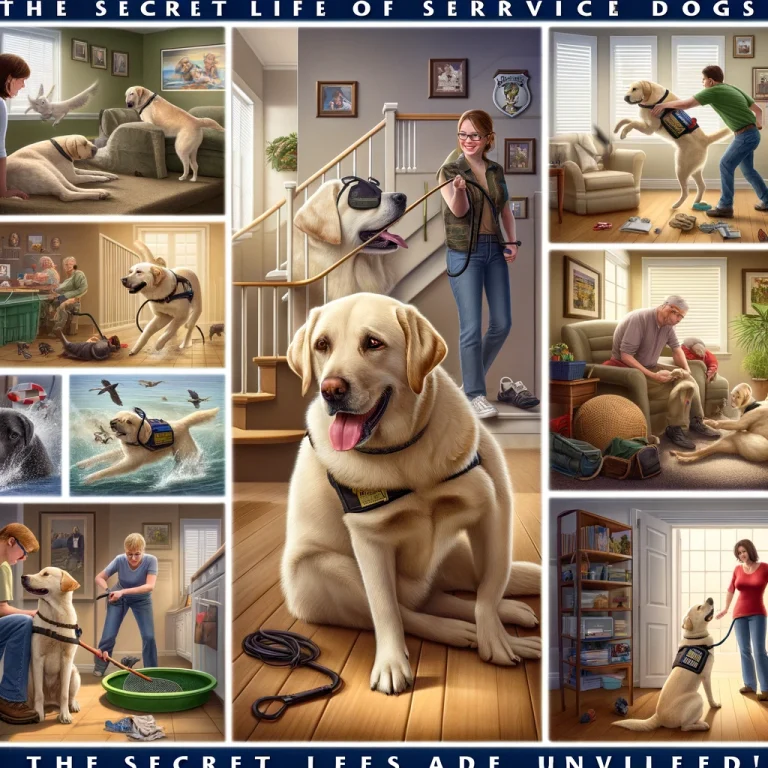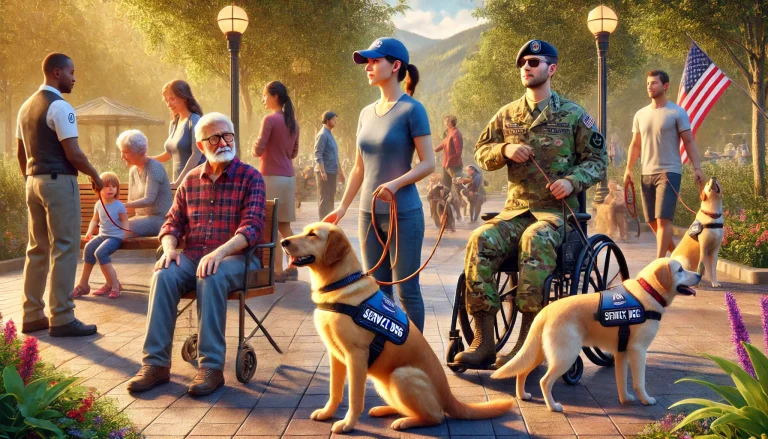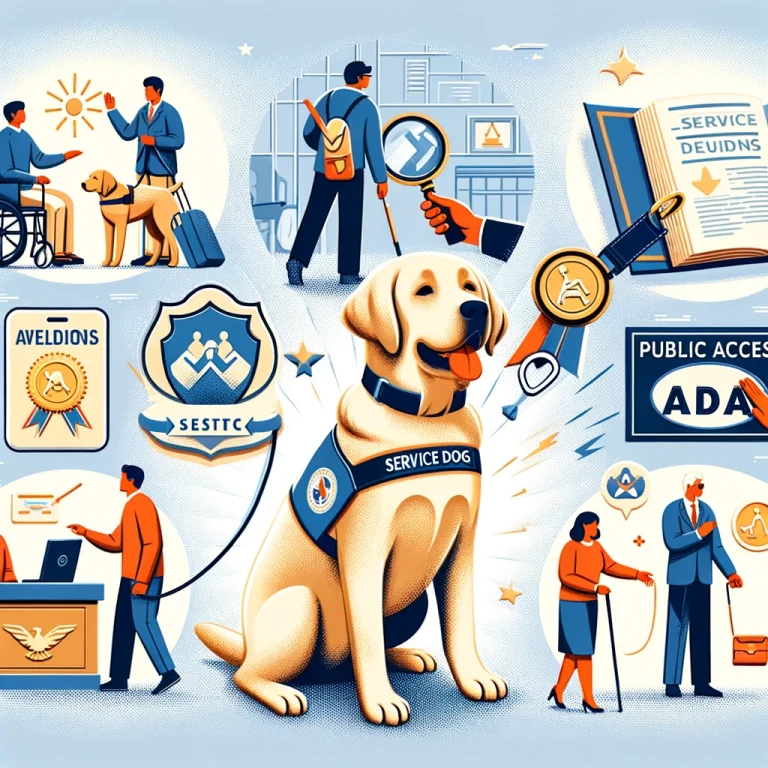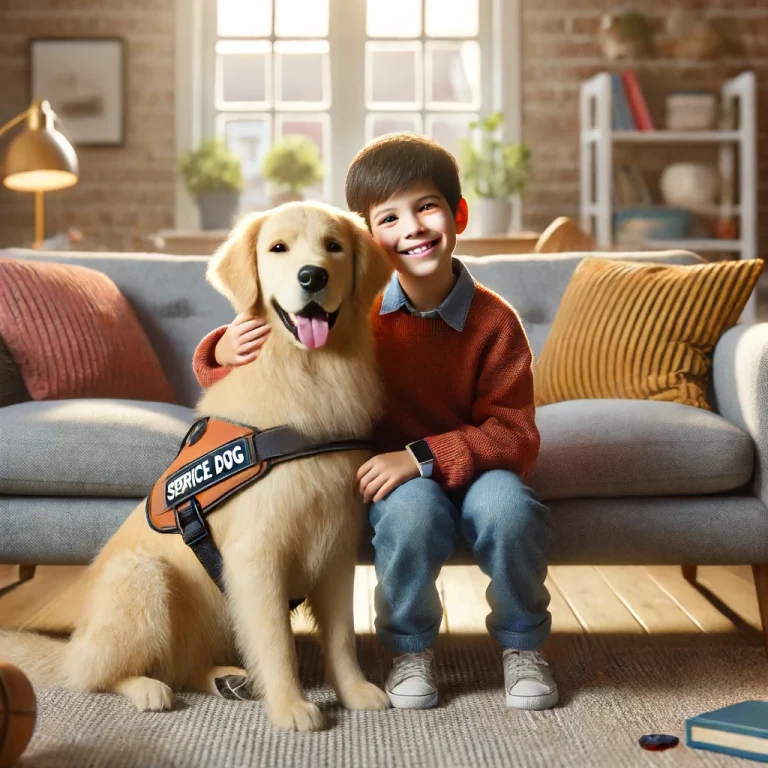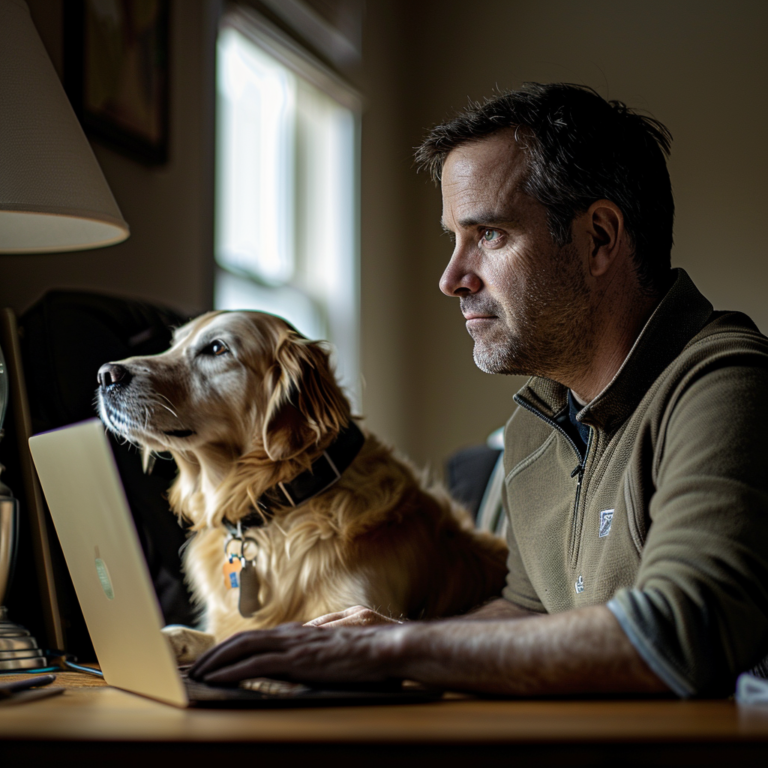Training your service dog not to react to other animals is crucial for maintaining their focus and ensuring they can perform their duties effectively. In this blog post, we will explore effective service dog training tips, techniques for preventing animal distractions, and desensitization techniques for service dogs. By the end of this guide, you’ll have the knowledge to train your service dog to stay calm and focused, enhancing their ability to assist you in various environments.
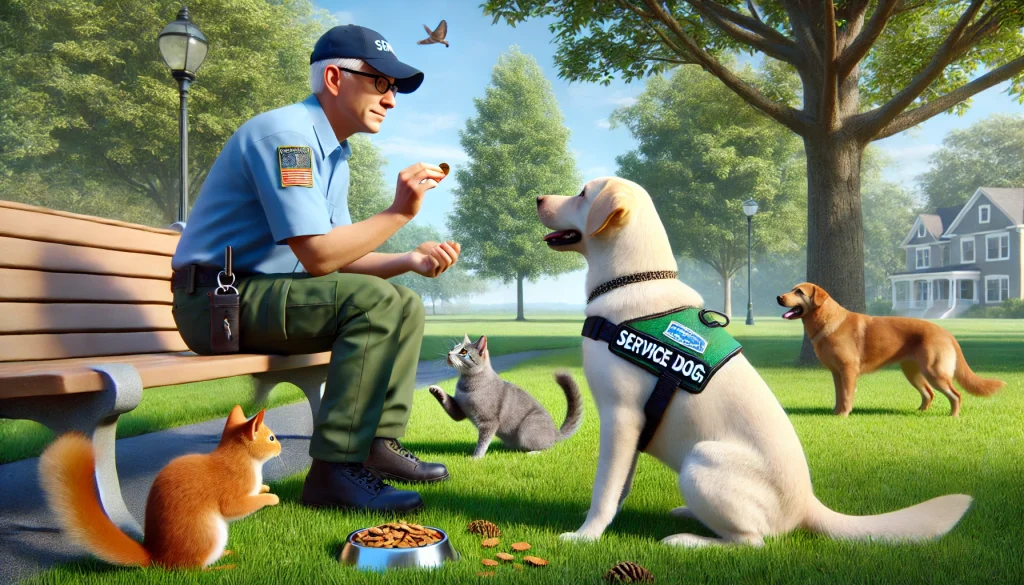
Understanding the Importance of Training
Why Reactivity is a Problem
Service dogs must remain calm and focused on their handlers, regardless of external distractions. Reactivity to other animals can compromise their ability to perform tasks, endangering both the handler and the dog. Ensuring your service dog does not react to other animals is essential for their effectiveness. For example, a guide dog distracted by a barking dog could lead their handler into danger. Similarly, a medical alert dog must stay focused to detect and respond to their handler’s needs accurately.
Benefits of Proper Training
Training your service dog to ignore other animals provides numerous benefits. It enhances their reliability, improves their ability to assist in different environments, and ensures their safety. Proper training builds a stronger bond between you and your service dog, fostering trust and cooperation. A well-trained service dog can accompany you to various places like parks, public transport, and busy streets, where distractions are inevitable. This capability increases your independence and confidence.
Service Dog Training Tips
Start with Basic Obedience
Before addressing reactivity, ensure your service dog has mastered basic obedience commands such as sit, stay, and come. A solid foundation in obedience is crucial for successful training. Consistent obedience training establishes a framework for your dog to understand and follow commands, even in the presence of distractions.
Use Positive Reinforcement
Positive reinforcement is a powerful tool in dog training. Reward your service dog with treats, praise, or play when they exhibit the desired behavior. This encourages them to repeat the behavior and strengthens the training process. Positive reinforcement also makes training enjoyable for your dog, which enhances their learning and cooperation.
Gradual Exposure
Introduce your service dog to other animals gradually. Start with controlled environments where you can manage the situation. Gradual exposure helps your dog become accustomed to the presence of other animals without feeling overwhelmed. Begin with low-distraction environments and slowly introduce more challenging scenarios. This method reduces anxiety and builds your dog’s confidence.
Preventing Animal Distractions
Identify Triggers
Observe your dog to identify what triggers their reactivity. It could be specific animals, certain behaviors, or particular environments. Knowing the triggers helps you address the problem more effectively. For example, some dogs may react strongly to cats but remain calm around other dogs. Identifying these triggers allows you to tailor your training approach.
Controlled Environment Training
Begin training in a controlled environment where you can manage interactions. Use barriers or maintain a distance to prevent direct contact initially. Gradually decrease the distance as your dog becomes more comfortable. Controlled environments, such as a fenced yard or a quiet park, provide a safe space for your dog to learn and practice.
Consistent Training Sessions
Consistency is key in training. Schedule regular training sessions to reinforce desired behaviors. Short, frequent sessions are more effective than long, sporadic ones. Consistent training helps your dog understand expectations and improves retention of learned behaviors.
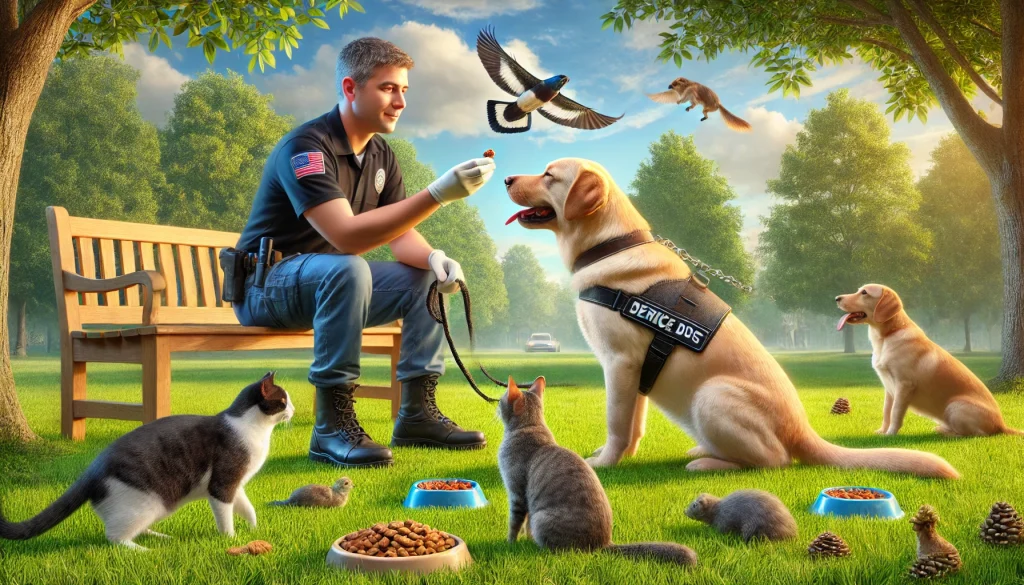
Desensitization Techniques for Service Dogs
Create Positive Associations
Create positive associations with the presence of other animals. Use treats, toys, or praise to reward your dog when they remain calm around other animals. This helps shift their focus from the animal to the reward. Over time, your dog will associate other animals with positive experiences, reducing their reactivity.
Practice Focus Exercises
Teach your service dog to focus on you, regardless of distractions. Use commands like “watch me” or “look” to encourage eye contact. Reward them for maintaining focus, gradually increasing the level of distraction. Focus exercises train your dog to prioritize your commands over external stimuli.
Gradual Desensitization
Gradual desensitization involves exposing your dog to the trigger at a low intensity and gradually increasing it. For instance, start with another animal at a distance and slowly bring them closer as your dog remains calm. This technique helps your dog become accustomed to the presence of other animals without triggering a strong reaction.
The Role of Professional Trainers
Seeking Professional Help
If your service dog’s reactivity is severe, consider seeking help from a professional trainer. Trainers experienced with service dogs can provide specialized guidance and support, ensuring effective training. They can also assess your dog’s behavior and develop a customized training plan to address specific issues.
Importance of Customized Training
Professional trainers can tailor training programs to address specific issues. Customized training ensures that the unique needs of your service dog are met, leading to better outcomes. Trainers can also provide valuable insights and techniques that you may not have considered, enhancing your training efforts.
Importance of Pet Insurance and Service Dog Products
Ensuring Health and Safety
Pet insurance is crucial for maintaining your service dog’s health. It covers veterinary expenses, ensuring your dog receives regular check-ups, vaccinations, and emergency care. A healthy dog is more capable of effective training and service. Regular veterinary care can detect health issues early, preventing them from becoming severe.
Investing in Quality Products
Using high-quality service dog products, such as vests, harnesses, and leashes, enhances your dog’s ability to assist you. These products ensure comfort and visibility, making it easier for your service dog to perform their tasks. High-quality gear reduces the risk of injury and improves your dog’s performance.
Self-Training Options
Benefits of Self-Training
Self-training your service dog can be a rewarding experience. It allows you to tailor the training to your specific needs and build a stronger bond with your dog. Additionally, it can be more cost-effective than professional training. Self-training also provides flexibility, allowing you to train at your own pace and schedule.
Resources for Self-Training
Websites like ServiceDogOwners.com offer resources and guides for self-training your service dog. These resources provide step-by-step instructions, training tips, and support from experienced trainers, making the process more manageable. Access to a supportive community and expert advice can enhance your training success.
Conclusion
Training your service dog not to react to other animals is essential for their effectiveness and safety. By following these service dog training tips, preventing animal distractions, and using desensitization techniques for service dogs, you can ensure your service dog remains calm and focused in various environments. Investing in pet insurance and quality service dog products further supports their health and ability to assist you.
Take advantage of the resources available for self-training or seek professional help if needed. With dedication and consistency, you can train your service dog to be a reliable and invaluable partner. Start your training journey today and experience the benefits of a well-trained service dog by your side.
Searching for a way to boost your income while keeping your service dog by your side? Learn how to launch a Side Hustle or new career and increase your earnings alongside your loyal companion. Click Here to find out more and start your journey today!
